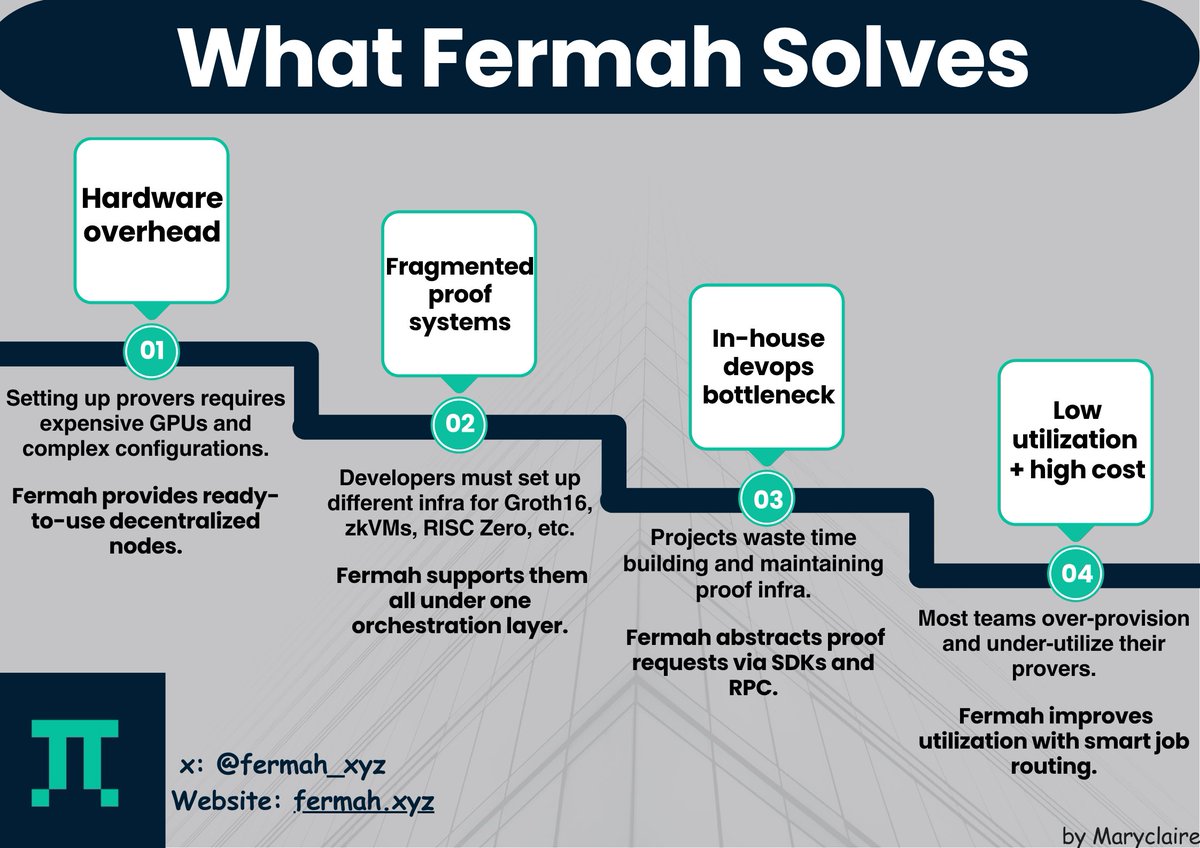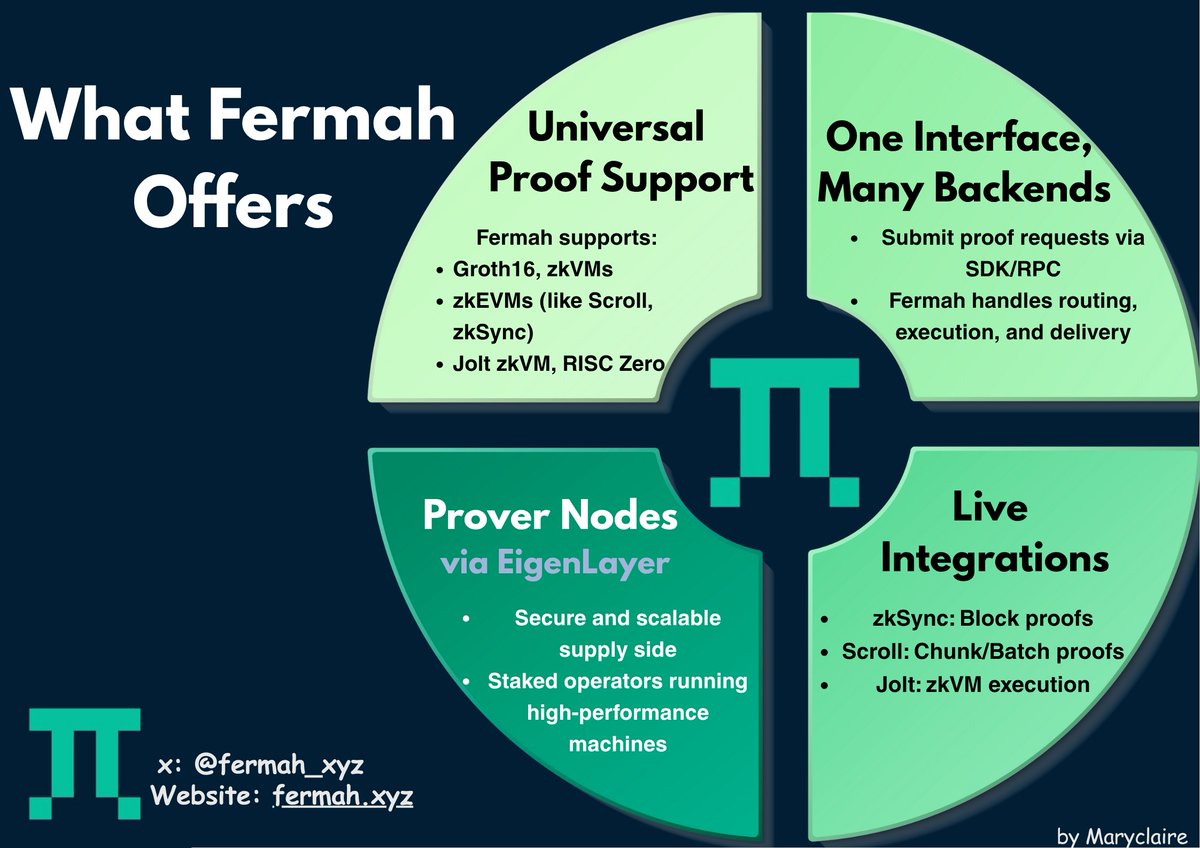Thanks for the deep dive and welcome to the fam
What’s the first thing that comes to your mind when you hear ZK?
For me, it’s Fermah.
Because @fermah_xyz isn’t trying to build the next ZK rollup, zkVM, or new proof system.
It’s building the platform all of them can plug into.
ZK proofs are powerful, but running infrastructure for them is a different beast entirely.
You need powerful hardware (usually GPUs),
highly specialized software environments,
and reliable orchestration to make sure everything runs smoothly.
It’s expensive, fragmented, and custom-built for each stack.
• Want to prove Groth16? You set up one system.
• Want to prove Scroll batches or zkSync blocks? That's another.
• Need to run RISC Zero or Jolt zkVM? Different again.
It’s as if every streaming service required its own TV, its own remote, and its own couch.
Fermah changes that.
Fermah is a universal proof generation marketplace.
That means anyone can submit proof requests across proof systems, chains, and VMs,
and Fermah will match them with the right operator node to compute and return that proof.
The way you use AWS to run compute,
You’ll use Fermah to generate proofs.
What does Fermah solve?
It abstracts proving infrastructure.
No more managing machines, installing circuits, or building Docker runtimes.
Instead, seekers submit jobs via RPC or SDK. Fermah’s matchmaker assigns them to available prover nodes.
The proof gets returned and optionally stored.
Under the hood, those nodes are run by Eigenlayer operators.
Meaning Fermah utilizes Ethereum's growing restaking economy to offer decentralized, performant proof generation.
This orchestration model means:
• Higher utilization of provers
• Lower cost per proof
• Faster return times
• Proofs as a service (at scale)
And it's not theoretical. It’s running.
Fermah currently powers production workloads for @zksync, generating block proofs with strong economic performance.
It's also integrated into Scroll’s zkEVM pipeline, covering chunk, batch, and bundle stages.
And it’s the proving layer for a16z’s Jolt zkVM, which is live in Fermah’s testnet.
Rather than pushing yet another ZK framework, Fermah positions itself as the connective layer turning zero-knowledge proof generation into a programmable, reliable primitive for all.
So what does Fermah offer, in real terms?
A single interface to:
• Generate Groth16, zkVM, zkEVM, RISC Zero, or Jolt proofs
• Delegate proofs to off-chain nodes, abstracted away from your app logic
• Integrate proof generation across chains and systems
• Avoid the devops burden of maintaining in-house proving infra
Just like a developer doesn’t build a datacenter to deploy an app,
Fermah believes you shouldn’t need to build a prover farm just to use zero-knowledge.
TL;DR
Fermah isn’t just another ZK tool.
It’s the infrastructure layer making universal ZK generation possible.
When proof generation becomes commoditized, automated, and integrated across the stack,
it won’t be because every app built its own pipeline.
It’ll be because Fermah made it easy to plug in and get proving.
Gfermah.
@vanishree_rao


2.4K
15
The content on this page is provided by third parties. Unless otherwise stated, OKX is not the author of the cited article(s) and does not claim any copyright in the materials. The content is provided for informational purposes only and does not represent the views of OKX. It is not intended to be an endorsement of any kind and should not be considered investment advice or a solicitation to buy or sell digital assets. To the extent generative AI is utilized to provide summaries or other information, such AI generated content may be inaccurate or inconsistent. Please read the linked article for more details and information. OKX is not responsible for content hosted on third party sites. Digital asset holdings, including stablecoins and NFTs, involve a high degree of risk and can fluctuate greatly. You should carefully consider whether trading or holding digital assets is suitable for you in light of your financial condition.


